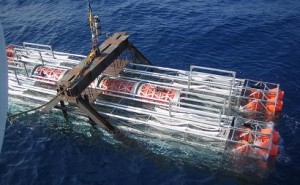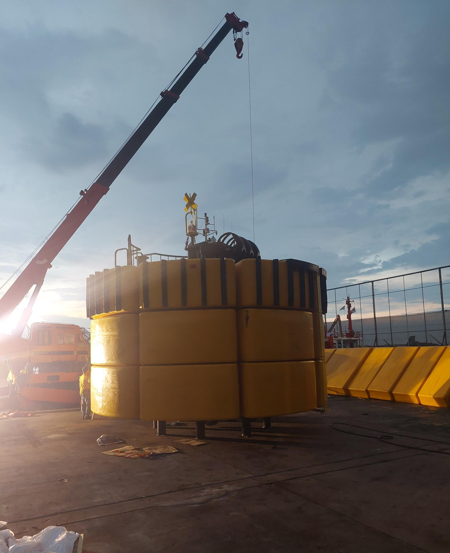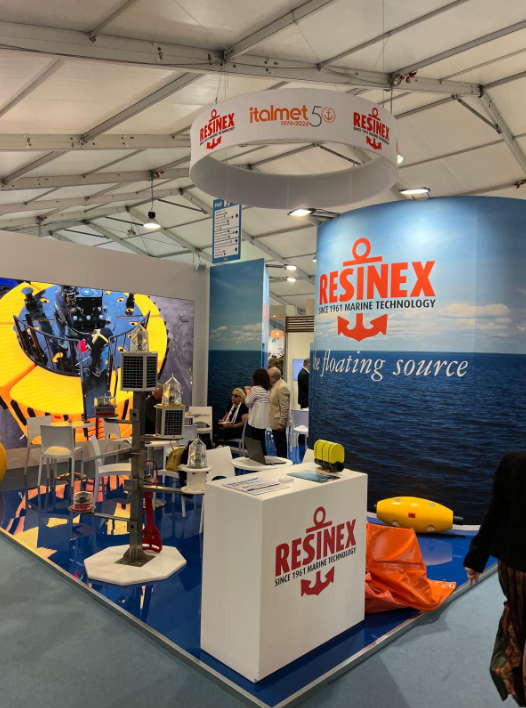 Descending until and beyond 3 thousand metres under the level of the sea even though it was projected to sustain pressures until 400 bars can be found the experimental Nemo project (Neutrino Mediterranean Observatory) which the Institute of Nuclear Physics (INFN) has in course to create a telescope of a new conception, baptised Kilometro cubo (Cubic kilometer).
Descending until and beyond 3 thousand metres under the level of the sea even though it was projected to sustain pressures until 400 bars can be found the experimental Nemo project (Neutrino Mediterranean Observatory) which the Institute of Nuclear Physics (INFN) has in course to create a telescope of a new conception, baptised Kilometro cubo (Cubic kilometer).
The syntactic foam floats which support this installation are Resinex products, just as those used in 2005 during the first phase of the experiment. In the light of experience the new buoys have been made thinner, obtaining greater modularity. Purposely studied for deep water, they were positioned at the base of the mini towers which give support to the structure and are currently in the test phase.
The Nemo project foresees the construction of a big submerged antenna in order to reveal high energy neutrins coming from astrophysic sources. Revealing the presence of neutrins could extend the knowledge of the actual astronomy which is based on the revealing of photons, that is light and electromagnetic radiation.
It also represents the biggest monitoring station (oceanographic, geophysical, chemical and acoustic) in the marine environment as well as a pole of technology development for the exploration of the abyss. The definite location will probably be off Cape Passero (Sicily), which will permit the telescope to be positioned at a depth of about 3.500 metres and some 100 kilometres off the coast of Sicily. Under this stretch of water, the telescope will be in optimum position of darkness in respect to low energy cosmic radiation that at a more shallow level would counter it and not allow the observation of the neutrins. It will extend for two square kilometres and is made up of 81 750-metre high towers with about 5.000 light sensors.




